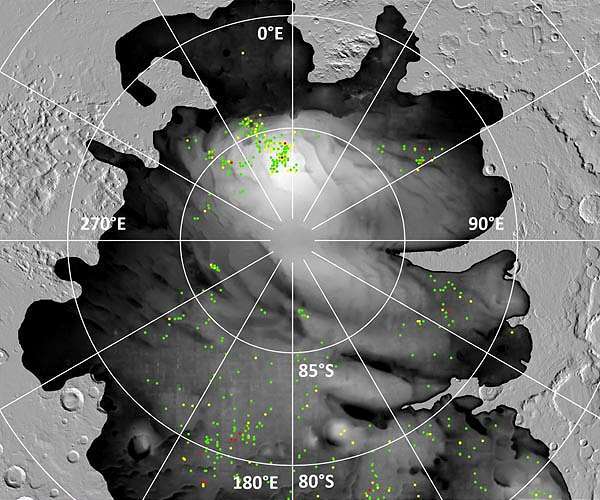10.06.2024

Cornell University researchers have offered a straightforward explanation for bright radar reflections that were initially thought to indicate liquid water beneath Mars' south pole ice cap.
Simulations conducted by the team demonstrate that minor variations in layers of water ice can cause constructive interference between radar waves. This interference can produce reflections that match current observations, not only in the proposed liquid water area but also across the south polar layered deposits.
"I can't say it's impossible that there's liquid water down there, but we're showing that there are much simpler ways to get the same observation without having to stretch that far, using mechanisms and materials that we already know exist there," said Daniel Lalich, research associate in the Cornell Center for Astrophysics and Planetary Science. "Just through random chance you can create the same observed signal in the radar."
Robotic explorers have provided substantial evidence of ancient water flow on Mars' surface, such as a former river delta under investigation by NASA's Perseverance rover. In 2018, the European Space Agency's Mars Express orbiter team announced the discovery of a lake buried below the south polar cap, based on radar data.
The discovery implied the possibility of microbial life where liquid water exists.
However, Lalich noted that while similar radar reflections on Earth would likely indicate a subglacial lake, Mars' temperature and pressure conditions are vastly different.
Lalich's earlier work showed that bright radar signals could occur without liquid water. He also highlighted that assumptions about frozen carbon dioxide layers below the ice cap were likely incorrect.
The new research provides a comprehensive story, filling gaps in the radar interference hypothesis with realistic modeling. Thousands of random layering scenarios, based on known Martian polar conditions, varied the ice layers' composition and spacing. These adjustments sometimes produced bright subsurface signals consistent with observations from the Mars Express orbiter's MARSIS radar instrument, a collaboration between NASA and the Italian Space Agency.
"This is the first time we have a hypothesis that explains the entire population of observations below the ice cap, without having to introduce anything unique or odd," Lalich said. "This result where we get bright reflections scattered all over the place is exactly what you would expect from thin-layer interference in the radar."
While not dismissing the possibility of future detections by more advanced instruments, Lalich suggested that the potential for liquid water and life on Mars might have ended long ago.
"The idea that there would be liquid water even somewhat near the surface would have been really exciting," Lalich said. "I just don't think it's there."
Quelle: SD
